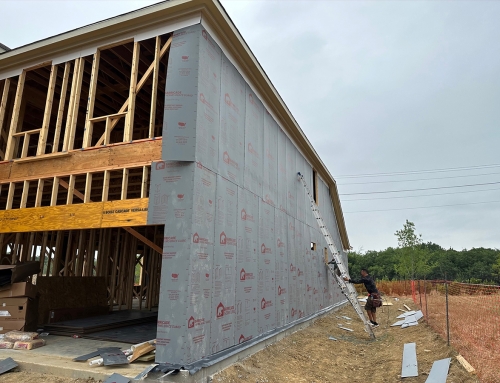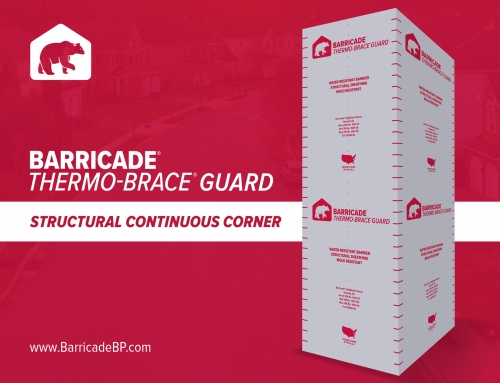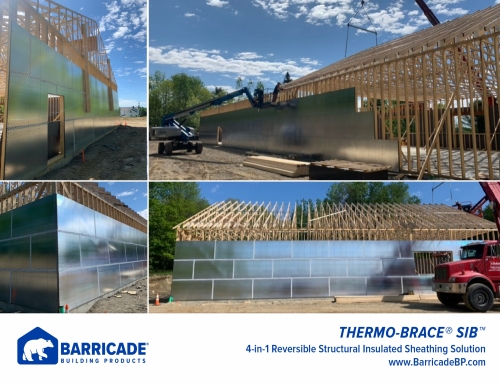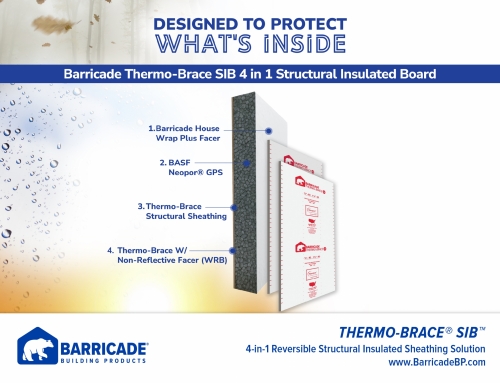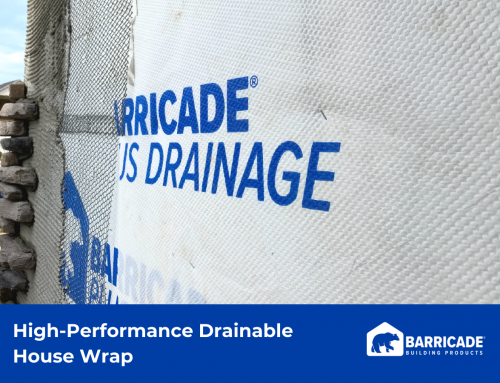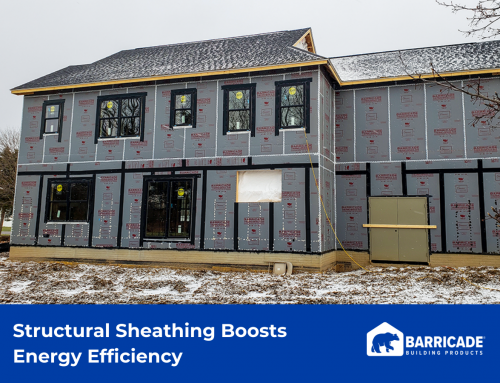A superior exterior wall vapor barrier must prevent both vapor diffusion and air flow (and the moisture attached to it) from infiltrating a building envelope. Furthermore, a high-performing vapor barrier, like Barricade Building Wrap, is semi-permeable, which ensures the evaporation of moisture within a wall system.
Many Vapor Barriers Do Not Stop Air Flow and Are Not Permeable
Many exterior wall vapor barriers only stop vapor diffusion, but not air flow, through building materials. Allowing airflow is a problem because moisture transferred by air flow is 50 to 100 times more than that carried by vapor diffusion.
Moreover, these vapor barriers are not sufficiently permeable, so the moisture that enters the wall system through air flow may not escape. Incomplete drying within the building enclosure can cause mold and rot, which is unhealthy to the occupants of a building and can damage the integrity of the structure. A 2018 study found that because the vapor barrier only prevented vapor diffusion, they did not find major changes in the moisture content of the wall system.
Because of the moisture associated with air movement, the best vapor barrier systems must include air-resistance and vapor permeability.
The Importance of Air-Resistant Vapor Barriers
It is essential that vapor barriers stop air-transported moisture, either by conduction, convection, or radiation, from infiltrating a wall system. If warm vapor touches the cold interior walls, the vapor will turn to liquid by condensation.
- Thermal conduction is the action of hotter particles moving towards cooler particles. The effective R-value of a structure’s wall assembly is a measure of its resistance to conduction.
- Thermal convection is the transport of heat energy from a warmer space to a cooler space by the transport of fluids (usually liquids and gases).
- Thermal radiation transfers heat from warm areas to cold spaces by electromagnetic waves, which is mainly the sun’s radiation.
The Importance of Permeable Vapor Barriers
The permeability for a superior wall vapor barrier ensures evaporation of the moisture within the wall assembly. Permeability (perm) is a wall system’s ability to dry and drain the moisture in at least one direction; however, two directions are better. Water can intrude a wall assembly in many ways: from rain, through conduction, convection, radiation, and from the inside of the structure if the HVAC system does not properly remove the moisture. Therefore, moisture vapor permeability of a vapor barrier is critical so the moisture can escape and not get trapped in the wall assembly.
Vapor Barrier Code Requirements
The need for a vapor barrier material on the exterior of a building or home is dependent on the climate zone. The 2018 International Residential Code R702.7 and the 2018 International Building Code 1404.3 mandate Class I or II vapor retarders and barriers on the interior of a wall frame in climate zones Marine 4 through 8.
Vapor Barriers Vs. Vapor Retarders
Vapor barriers prevent vapor diffusion, while vapor retarders only slow vapor diffusion. The desiccant method of ASTM E 96 determines the vapor retarder (barrier) class by measuring a product’s ability to restrict the amount of moisture that flows through it.
- Class I vapor barrier: 0.1 perm or less.
- Class II vapor retarder: 0.1 < perm <1.0 perm.
- Class III vapor retarder: 1.0 < perm <10 perm
Barricade Wrap – A Superior Exterior-Wall Vapor Barrier
Barricade Building Wrap is a superior exterior wall vapor barrier that provides a continuous air barrier that covers the whole building envelope. Barricade Building Wrap acts as a vapor barrier because it resists moisture while allowing humidity to escape from the interior wall system, which is of particular importance in hot and humid climates. Notably, Barricade Building Wrap is durable over the lifetime of the building and has the strength and stiffness to combat the forces that act on it during and after construction.
- Barricade Wrap is a continuous air barrier that controls the flow of moisture, air, and heat, which ensures a healthy, comfortable, energy-efficient, and durable building. Importantly, Barricade Wrap meets and exceeds the air barrier demands of the 2018 IECC R402.4.1 and C402.5.1.
- Barricade Wrap has US perm rating of 11 (ASTM E96 test) and is permeable to moisture. The standard requires a house wrap with five perms or more.
- Barricade Wrap is durable because it is resistant to moisture, cold, and UV rays.
- Barricade’s resistance to temperature (AC38 Section 3.3.4) ensures the material will not crack at low temperatures.
- Barricade Wrap can tolerate twelve months of UV-exposure without damage.
- Barricade Building Wrap passed the ASTM D779 (boat test), CCMC 07102 (pond test), and AATCC Test Method 127 for water resistance.
- Barricade Building Wrap maintains its integrity with tear-stop design and superior strength. Barricade Wrap passes the ASTM D5034, and ASTM D882 tests that measure a material’s strength or resistance to tearing.
Barricade Building Wrap is an effective air and vapor barrier that is continuous, permeable, and durable. Unlike impermeable vapor barriers that only control vapor diffusion, Barricade Building Wrap resists moisture while permitting humidity to escape from interior wall systems. Please visit Barricade® for more information on superior vapor barriers.


